|
| |
Jazz Bassoon - Classical Crossover
Jazz Bassoonist Daniel Smith
has offered us the UK Premier Promotion of his latest Album - The Swinging
Bassoon! - Book Now!!
  Bassoon,
and Contrabassoon - Woodwind Instrument Bassoon,
and Contrabassoon - Woodwind Instrument
The beginning of the bassoon is similar to the
oboe. The bassoon itself first appeared about 1650, and by the end of the
1700’s, it had from 4 to 8 keys. During the 1800’s, many people experimented
with improving the fingering of the bassoon. Most of the changes helped the
fingering, but made the tone of the instrument suffer. The
Heckel
family of Germany managed to improve the fingering of the bassoon
without damaging its tone. Many professionals today play bassoons made by the
Heckel Company.
The bassoon is the lowest and largest of the woodwinds. Its sound has a lot of
variety, depending on if low, medium or high notes are used. In the very highest
range, the bassoon can sound throaty and not of this world. In its mid-range,
the bassoon has a large, full, mellow noise. In the lowest range, it can be
extremely powerful and heavy. Similar to its cousin, the oboe, it has a double
reed, though its reed is larger and the cane must be bound together with wire
and heavy thread. The reed fits onto the metal crook, or S- bocal, which is a
curved metal tube about 13-1/2 inches long that fits into the bassoon. If you
strapped it to a vice and stretched it out, it would be approximately nine feet
long. If it was to be compared with the strings, the bassoon would be equal to a
cello. Once upon a time someone said it sounded like a baritone singer with a
bad cold.
In order to play a bassoon, most players must have rather large hands, so most
begin on another instrument and learn bassoon secondly. Bassoons are usually
made of maple wood, Pear wood although some models are now
made of ebonite (hard, black rubber) (or plastic).
It is a very versatile instrument. It can play very low notes and still
get quite high. It can also play very quick passages of music.
The three branches of the woodwind family have
different sources of sound. Vibrations begin when air is blown across the top of
an instrument, across a single reed, or across two reeds. Reeds are small pieces
of cane. A single reed is clamped to a mouthpiece at the top of the instrument
and vibrates against the mouthpiece when air is blown between the reed and the
mouthpiece. Two reeds tied together are commonly known as a double reed. This
double reed fits into a tube at the top of the instrument and vibrates when air
is forced between the two reeds.
The bassoon is a large double reed instrument with a lower sound
than the other woodwind instruments. Its double reed is attached to a small
curved tube called an S-bocal which fits into the bassoon. When the player blows
air between the reeds, the vibrating column of air inside the instrument travels
over nine feet to the bottom of the instrument, then up to the top where the
sound comes out. The bassoon is so long that it has to be bent in half!
The Bassoonist is sometimes asked to play the Contrabassoon -
this makes a fantastically deep sound. The double bassoon, or contrabassoon,
sounds lower and is about two times longer (if stretched out). Perhaps the idea
even came from a serpent (being all wound up, that is). Because of its unusual
appearance, it’s sometimes called the "clown of the orchestra" but for the
serpent. (it would look even stranger if it was NOT folded up!). If you think
that this instrument is heavy, you’re right. Players must support it with a
sling. If instruments were people, the double bassoon would be a bass.
The bassoon can play chords called multiphonics

The bassoon is a double-reed
woodwind instrument with a
conical bore air column, the bass member of the
oboe family. Its normal range is about 3 octaves, from
B1flat to E5flat. The tube, 2.79 m (9 ft 2 in) long, is bent to
make a height of 1.22 m (4 ft) and consists of a metal crook on
which the reed is placed and four sections of maple or pear wood:
the tenor, the butt, the bass, and the bell. The
characteristic sound of a bassoon is influenced by a strong
formant, as illustrated by the accompanying waveforms. Each
of the notes displayed has a peak of intensity in the
neighbourhood of 500 Hz.
The double reed
is made from cane, with most bassoonists making their own reeds.
The player's lips exert a lot of control over the reed, with
more than half of the reed in the player's mouth.
The player's
right hand is responsible for seventeen different keys with nine
of them controlled by the thumb. The left hand controls twelve
with four for the thumb.
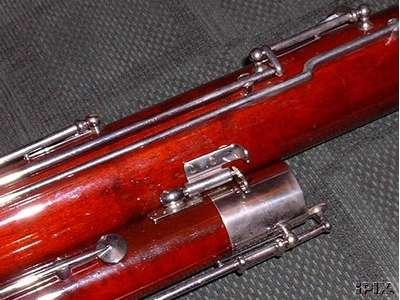
 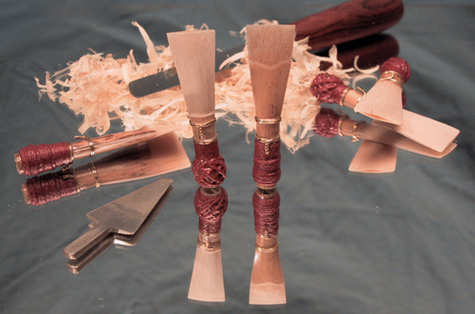 Reeds Reeds
This is an
outline drawing of a Bassoon reed. You might think a Bassoonist
is part mechanic if you look at some of the tools that are used
to make reeds.
The raw
cane is gouged and then cut with a profiler which removes the
bulk of the unwanted bark and cane to get close to the desired
profile.
While working on the reed, it is common to check the thickness
of the blades by using a precision dial indicator which gently
presses down on the reed with a spring-loaded arm, connected to
a dial which reads the thickness in fractions of a Millimetres.

Daniel
Smith Bassoonist
The leading pioneer
of the bassoon with his many critically acclaimed award-winning
recordings and live performances. As the most recorded bassoon
soloist in the world, his repertoire spans music ranging from
Baroque concerti to contemporary music including jazz, ragtime and
crossover. He is the only bassoonist performing and recording in
both the jazz and classical fields. Daniel Smith's unique career has
been profiled in Gramophone, the New York Times, Fanfare, Classical
Music, Musical Heritage Review, American Record Guide, Classic CD
and many leading European publications including The Times in
England. In the USA, his career was highlighted on PBS's "All Things
Considered'. In the UK, one of his recordings was the 'signature
tune' for BBC radio 3 while BBC radio 4 recently showcased his
career.
Daniel Smith's performances include jazz with his quartet 'Bassoon
and Beyond', classical recitals with piano, concertos with
orchestra, and highly popular programs divided between classical and
jazz, with music ranging from Vivaldi, Elgar, Mozart and Verdi to
Duke Ellington, John Coltrane, Charlie Parker, Sonny Rollins and
Dizzy Gillespie. Described as a 'phenomenon', he has been called the
'Gerry Mulligan of the Bassoon' in the world of jazz and the
'Galway' and 'Rampal of the Bassoon' in the world of classical
music, bringing his unique sound and style to concert series,
festivals and jazz clubs.
His historic and unprecedented 6 CD set on
ASV of the complete
37 Vivaldi bassoon concertos was chosen as 'Best Concerto Recording
of the Year' by the Music Industry Association and awarded the
Penguin Guide's coveted *** rosette rating as well as inclusion in
Fanfare's annual 'Want List'. These concertos, recorded with The
English Chamber Orchestra and I Solisti di Zagreb, firmly
established Daniel Smith as a leading soloist on his instrument. His
recordings with the Royal Philharmonic Orchestra and Caravaggio
Ensemble for the
ASV White Line label produced innovate crossover
albums, with unique renditions of ragtime pieces, opera excerpts,
and popular standards. In the world of jazz, his albums on the Zah
Zah label, 'BEBOP BASSOON' and 'THE SWINGING BASSOON' showcase the
music of Charlie Parker, Thelonious Monk, Sonny Rollins, Horace
Silver, Duke Ellington, Count Basie, Dizzy Gillespie and many other
legendary jazz artists. Other recordings of Daniel Smith are
available on Vox,
MHS, KemDisc, Pearl,
Spectrum, Cambria, Regis, Crystal and Forum labels.
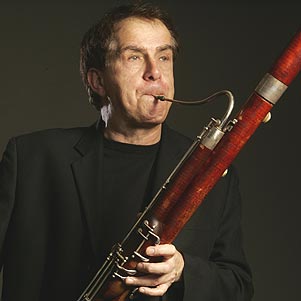 His
performances have included many firsts: The American West Coast
premiere of Pulitzer Prize-winning composer Gunther Schuller's
'Concerto for Contrabassoon and Orchestra'; the world premiere of
Steve Gray's 'Jazz Suite For Bassoon' with the Welsh Chamber
Orchestra; solo concerts at New York's Lincoln Centre and the Tivoli
Concert Hall in Copenhagen, and also five appearances at London's
'Pizza On The Park' with his jazz quartet. Other major venues where
he has performed include New York's Carnegie Recital Hall (two
appearances) and the Merkin Concert Hall. In London, the Wigmore
Hall (three times), St.John's Smith Square, and the BBC Concert
Hall. His
performances have included many firsts: The American West Coast
premiere of Pulitzer Prize-winning composer Gunther Schuller's
'Concerto for Contrabassoon and Orchestra'; the world premiere of
Steve Gray's 'Jazz Suite For Bassoon' with the Welsh Chamber
Orchestra; solo concerts at New York's Lincoln Centre and the Tivoli
Concert Hall in Copenhagen, and also five appearances at London's
'Pizza On The Park' with his jazz quartet. Other major venues where
he has performed include New York's Carnegie Recital Hall (two
appearances) and the Merkin Concert Hall. In London, the Wigmore
Hall (three times), St.John's Smith Square, and the BBC Concert
Hall.
In 2003, Daniel Smith was designated as 'Ambassador for the Bassoon'
by Youth Music in the UK.
In 2005, legendary composer/arranger ROBERT FARNON dedicated his
final composition to Daniel Smith. Entitled 'Romancing the Phoenix',
this three movement bassoon concerto for solo amplified bassoon with
rhythm section and full symphony orchestra in a jazz oriented style
with symphonic overtones was written specifically with Daniel in
mind. Warner Chappell recently published the score and parts with
Robert Farnon's dedication to 'The American virtuoso Daniel Smith'
on the title page. World-wide premieres of this exciting and
innovative piece by one of the 20th Century's greatest
composer/arrangers will be announced shortly.
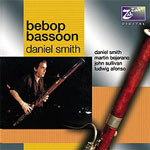 Daniel
Smith has invested a lot of time and energy to bring the repertoire
of the bassoon into ragtime, jazz and contemporary music. Smith has
recorded such titles as Bassoon Bon Bons, Bravo Bassoon
and The Swinging Bassoon, as well as performances of Gunther
Schuller's “Concerto for Contrabassoon and Orchestra” and Steve
Gray's “Jazz Suite For Bassoon and Orchestra.” As a result of his
many and diverse bassoon recordings, he has received considerable
media attention for his efforts. In 2005, composter/arranger Robert
Farnon dedicated his final composition to Smith: “Romancing the
Phoenix,” a three-movement bassoon concerto with rhythm section and
symphony orchestra in a jazz setting. Daniel
Smith has invested a lot of time and energy to bring the repertoire
of the bassoon into ragtime, jazz and contemporary music. Smith has
recorded such titles as Bassoon Bon Bons, Bravo Bassoon
and The Swinging Bassoon, as well as performances of Gunther
Schuller's “Concerto for Contrabassoon and Orchestra” and Steve
Gray's “Jazz Suite For Bassoon and Orchestra.” As a result of his
many and diverse bassoon recordings, he has received considerable
media attention for his efforts. In 2005, composter/arranger Robert
Farnon dedicated his final composition to Smith: “Romancing the
Phoenix,” a three-movement bassoon concerto with rhythm section and
symphony orchestra in a jazz setting.
In working with a
jazz piano trio in order to adapt the bassoon to an all-jazz
standards setting, Smith is extremely comfortable with the concept
and the results, even if the instrument does not treat all of the
titles equally. For example, on Thelonious Monk's “Blue Monk,” the
mournful sound of the bassoon is just perfect to demonstrate how
well the concept works. However, when he tackles Horace Silver's
“Sister Sadie,” the funky classic sounds too artificial. The ballad
and blues entries, like the Miles Davis “All Blues” or the Ellington
piece “In a Sentimental Mood” are sympatico with the use of bassoon
as a lead instrument—as is the case with such bebop classics as
“Killer Joe,” the Parker/Gillespie tune ”Anthropology” and Sonny
Rollins' “Doxy.” In an interesting departure from this format,
Daniel Smith provides an experiment in adapting Coltrane's “Up
Against the Wall” to fit a piano-less group of bassoon, bass and
drums. Otherwise, Smith is well supported by the trio of Martin
Bejerano (piano), John Sullivan (bass) and Ludwig Afonso (drums)
Track listing: Killer Joe; Anthropology; Blue
Monk; Sister Sadie; In A Sentimental Mood; All Blues; Doxy; Up
Against the Wall; Birk's Works; Sticky Wicket.
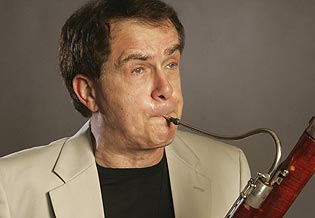
I would like also
to bring up the subject of unusual and different music which can be
performed on the bassoon and also jazz. Ragtime if executed with the
right feeling can sound very natural on the instrument, as does a
large amount of 'crossover' material including transcriptions of
music normally performed on other instruments as well as orchestral
pieces. As for playing jazz on the bassoon several years ago, Steve
Gray composed a work for me entitled 'Jazz Suite' which I had the
honour of performing with the Welsh Chamber Orchestra. The piece
contained improvisational spots and which forced me to plunge in and
get serious about playing real jazz on the instrument. I was already
a virtuoso so to speak but all of my technical skills were of no
help whatsoever in learning how to play jazz in a serious way. I had
to methodically learn to play extended chords and scales from top to
bottom on the instrument and in all keys. This included many scales
and chords which do not appear in classical music. And then to place
all ideas exactly where the underlying chords are heard and of
course to 'hear' musical ideas many measures before you execute
them. This took me about four years to accomplish and along the way
my arms became very sore and stiff from the effort. But then
suddenly the ideas flowed and the soreness stopped... everything
just flowed! All the musical ideas made sense and can now perform a
full two hour jazz concert without using any music and with a
repertoire of nearly one hundred jazz pieces to pick from including
bebop, swing, Latin, blues, ballads, etc.
Finally, the
bassoon must be amplified when performing jazz, otherwise it would
not be heard above a rhythm section, let along a full symphony
orchestra. I have a special microphone attached to my crook/bocal
which makes this possible. When Robert Farnon found this out, he was
much relieved knowing that his music would be clearly heard above
the orchestra in his bassoon concerto, And as for developing a jazz
style on the instrument, there are no real role models from the past
to learn from such as Armstrong, Gillespie or Davis on trumpet or
Parker, Getz or Rollins on saxophone. It is all pioneering stuff and
I am very pleased to be involved in such ground breaking efforts and
of course with the bassoon concerto of Robert Farnon as a fitting
memorial to his memory and talent.

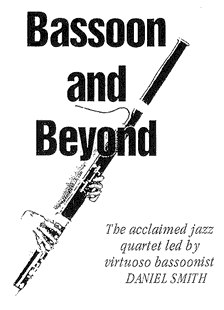 . .
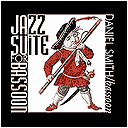
 Daniel
Smith's
latest recordings, BEBOP BASSOON and THE SWINGIN' BASSOON
are to be released on the Zah Zah label. Featuring a top US rhythm
section (pianist Martin Bejerano, bassist John Sullivan and drummer
Ludwig Afonso), the two CDs were recorded 'back-to-back' and up
until now have been only available from Daniel's management where
they were enthusiastically received by jazz critics worldwide. Daniel
Smith's
latest recordings, BEBOP BASSOON and THE SWINGIN' BASSOON
are to be released on the Zah Zah label. Featuring a top US rhythm
section (pianist Martin Bejerano, bassist John Sullivan and drummer
Ludwig Afonso), the two CDs were recorded 'back-to-back' and up
until now have been only available from Daniel's management where
they were enthusiastically received by jazz critics worldwide.
THE MUSICIANS
MARTIN BEJERANO: PIANO
C urrently
member of the Roy Haynes band. Performed with: Russell Malone,
James Moody, Ira Sullivan, Marcus Printup and many others. Major
jazz festivals including those of Playboy, Montreal, Aspen,
Ravinia, Sedona, Big Sur, Lincoln Center, Bahia, Charlie Parker.
Jazz clubs appearances include: Birdland, The Blue Note, Jazz
Gallery, Sunset Club (Paris), Jazz Showcase, Dakota. Recordings
on various labels.
JOHN SULLIVAN: BASS
Currently member
of the Roy Haynes band. Performed with Joe Lovano, Roy Hargrove,
Mike Manieri, Louis Hayes, David Sanchez, Bill Stewart. Jazz
club venues and festivals include: The Jazz Gallery, Village
Vanguard, The Blue Note, The Knitting Factory, Smalls, Lincoln
Centre. Recordings on various labels.
LUDWIG AFONSO: DRUMS
One of New York's
premier jazz drummers, currently with Spiro Gyra. Featured with
Bob Berg, Ira Sullivan, Nestor Torres, Sammy Figueroa, Eddie
Rivera, Hector Martianon, Donny McCaslin. Ensembles include CJB
Concert Jazz Band and the Bop Brothers. Recordings on various
labels.

Paul Hanson Jazz
Bassoon
A Bassoon Innovator
It can be safely said that Paul Hanson is a true innovator on the
bassoon. He has rewritten the rulebook and set new standards for
what is possible on this most classical of woodwind instruments. His
explorations have transcended limitations and created new
possibilities-all while making music of the highest quality. Paul’s
repertoire encompasses musical aspects of all modern styles of
improvised music. From his roots as an award-winning classical
bassoonist and jazz saxophonist- Paul has sought to expand the
lexicon of the bassoon while creating a unique musical voice.
As an improvising bassoonist-Paul has recorded and/or performed with
Bela Fleck and the Flecktones, Wayne Shorter, Medeski Martin & Wood,
Bob Weir’s RATDOG, Peter Erskine, Billy Childs, Billy Higgins, Ray
Charles, Charlie Hunter, T. Lavitz from Dixie Dregs, Jeff Sipe,
Jonas Hellborg, Omar Sosa, Bob Moses, Kai Eckhardt, Peter Apfelbaum
and the Hieroglyphics Ensemble, The Paul Dresher Ensemble, DAVKA,
St. Joseph Ballet Company, The Klezmorim, as jazz soloist with the
Oakland Eastbay Symphony Orchestra, as classical soloist with the
Napa Symphony Orchestra (non-improvising) and many more. As a sax
player-Paul has recorded and/or performed with Eddie Money, Boz
Scaggs, The Tempations, Kotoja, What It Is, Samba Ngo, Ed Kelly,
Steve Smith, Tom Coster and others.
Paul has travelled throughout Europe, Japan and the States. He has
appeared as a bassoonist at Carnegie Hall, the North Sea Jazz
Festival, the Berlin Jazz Festival, Monterey Jazz Festival, the
Ravinia Festival, the Leverkuzen Festival, the INTERLINK festival in
Japan, the California Edge Festival 2005 and at the 1999 NAMM show
in Nashville. As a performer/educator- Paul has performed and
masterclassed at IDRS festivals from Rotterdam to Texas. He has
given masterclasses at Ithaca College, Penn State University,
Arizona State University and Portland State University-all
specializing in modern performance techniques and improvisation for
bassoonists and other classical instrumentalists.
Awards
Paul was the 1996 Grand Prize winner of JAZZIZ Magazine’s WOODWINDS
ON FIRE award-the first bassoonist ever to win. He also was the
winner of the Robert Mondavi Woodwind concerto competition in 1984.
Paul was awarded an NEA Jazz Fellowship in 1995.
Endorsements
Paul is a Moosmann Bassoon artist. He endorses Ultrasound
amplifiers.
http://www.ultrasoundamps.com/Products/Products.html
http://www.youtube.com/watch?v=k6i0nAT-3aU
http://www.youtube.com/watch?v=GkeEvFIBxec&mode=related&search=
http://www.youtube.com/watch?v=cpCGbb80JI4&mode=related&search=
Chic Corea's 'Got a Match'
http://www.youtube.com/watch?v=vuYE5G1C9MQ&mode=related&search=
Charlie Parker's 'Donna Lee'
Mike Rabinowitz -
Jazz Bassoonist
 For
over twenty years
Michael Rabinowitz has been on the cutting edge as a
versatile bassoonist. His broad musical experience makes him as
comfortable with Bach and Mozart as he is with Charlie Parker and
John Coltrane. For
over twenty years
Michael Rabinowitz has been on the cutting edge as a
versatile bassoonist. His broad musical experience makes him as
comfortable with Bach and Mozart as he is with Charlie Parker and
John Coltrane.
He has recorded with
Ira Sullivan, Red Rodney, Wynton Marsalis,
John Hicks, Dave Douglas and Joe Lovano. His
festival appearances include Chicago, Montreal, Berlin, Tri-city,
San Francisco and Hollywood Bowl. Michael can be heard with the
Mingus Orchestra. (See schedule for upcoming gigs). He has
appeared at such New York City venues as The Kavehaz and Birdland.
Michael's recordings have received high praise from around the
world. He recorded his third commercial CD,
Rabinowitz in Utopia,
in Holland, as an invited guest and recorded his fourth CD,
Bassoon in Orbit,
earlier this year on The Vanderbilt label. Mike's most recent
success has been his fifth recorded CD, Ocean Eyes.
http://www.youtube.com/watch?v=P4PhKe_tmJ4&mode=related&search=paul%20hanson%20jazz%20bassoon%20bebop%20flecktones%20jazzbassoonpaul
http://www.youtube.com/watch?v=dzc4MX5ozT8&mode=related&search=paul%20hanson%20jazz%20bassoon%20bebop%20flecktones%20jazzbassoonpaul
Alexandre Foo
Born in 1975, Sao
Paulo, Brasil. Studies with Klaus Thunemann in Berlin from 1999 to
2003. Academist from the Berlin Philharmonic, 2002-2003. Since 2004
, Solo Bassoonist from Sao Paulo Symphony Orchestra
http://www.youtube.com/watch?v=1l88CCk0O4I&mode=related&search=paul%20hanson%20jazz%20bassoon%20bebop%20flecktones%20jazzbassoonpaul
Alexandre Foo Quintet.
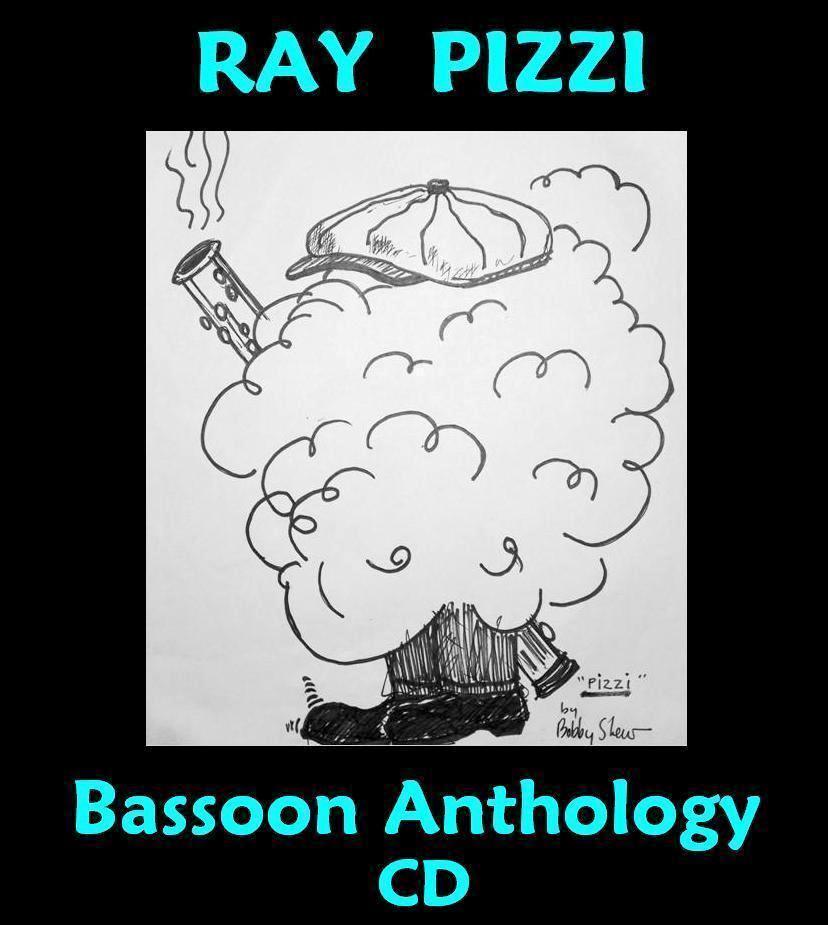 Ray
has enjoyed a long and fruitful career in the music industry,
working with such diverse artists as:Dizzy Gillespie, Frank
Zappa, Ravi Shankar, Henry Mancini, (who composed "Piece for
Jazz Bassoon and Orchestra" for Ray), John Williams,
Alan Silvestri, Quincy Jones, Jack Elliot, Lalo Schifrin, Sarah
Vaughn, Nancy Wilson, Madonna, Stevie Wonder, Chaka Kahn,
Barbra Streisand, Bill Conti, Burt Bacharach, Bobby McFerrin,
Horace Silver, Joe Henderson, Lou Rawls, Willy Bobo,
Michael Feinstein, Moacir Santos, Fred Myrow, Woody Herman
etc. Ray
has enjoyed a long and fruitful career in the music industry,
working with such diverse artists as:Dizzy Gillespie, Frank
Zappa, Ravi Shankar, Henry Mancini, (who composed "Piece for
Jazz Bassoon and Orchestra" for Ray), John Williams,
Alan Silvestri, Quincy Jones, Jack Elliot, Lalo Schifrin, Sarah
Vaughn, Nancy Wilson, Madonna, Stevie Wonder, Chaka Kahn,
Barbra Streisand, Bill Conti, Burt Bacharach, Bobby McFerrin,
Horace Silver, Joe Henderson, Lou Rawls, Willy Bobo,
Michael Feinstein, Moacir Santos, Fred Myrow, Woody Herman
etc.
He can be heard on numerous movie soundtracks and recordings,
including albums of his own.
(scroll down) His
international concert\festival performances as a headliner
include:
The Hollywood Bowl, L.A. Music Centre, Disney Concert
Hall, Davies Symphony Hall, The Los Angeles Philharmonic
Orchestra, American Orchestra, Rochester Symphony
Orchestra and the Playboy, Monterey, Mobile and various European
Jazz Festivals. The 1984 Olympics saw figure skater
Rosalyn Sumner performing her skating program to Rays
rockin' sax solo on "We Go Together"
As an actor, Ray starred in the leading role of the highly
acclaimed, award winning short subject movie, "End of the
Rainbow."
His outstanding
level of musicianship and versatility, has garnered him many
awards, including:
"Most Valuable Player Emeritus"(4 consecutive years) from NARAS, "Musician
of the Year" Jazz Podium Magazine, Germany. "Talent Deserving of
Wider Recognition"Downbeat Magazine,"Grammy
nominations" "Album of the Year"Hi-Fi Mag. "Silver Microphone
Award"Ad Music, "Jazz Pioneer Award"BMI, "John Phillip Sousa
Award"Quincy High School, Baritone Sax, "Honorary Citizens
Award"Mobile Alabama, is also included in both
Groves Music
Dictionary and Encyclopedia of Jazz.
Receiving his Bachelor of Music Education degree from Boston
Conservatory and Berklee School of Music, Ray successfully
taught public school Junior High Band, Chorus and Classroom
Music in Randolph Massachusetts. (1964-69). "A wonderfully
memorable and personal growth period of my life, but I needed to
fulfill an urgent desire to play music professionally." In 1969,
he moved to Los Angeles to realize his dream. .......Those
former students, still contact him to express their
acknowledgment and gratitude.............."the best gift a
teacher can receive"
Ray respectfully
credits and thanks his most influential teachers: Simon Kovar,
Irving Kams, Joe Viola,
Jim Progris, Jimmy Mosher, Herb Pomeroy, George Gaffney, Ivar O.
Nelson and Albert Harris.
He holds the highest regard and love for his bassoon teacher,
Simon Kovar, "The Father of the Bassoon"
who on his death bed, asked his wife Rose, to "call Ray Pizzi.....tell
him no lesson today" and passed away.
http://idrs.colorado.edu/
http://www.bdrs.org.uk/
http://www.adrs.org.au/adrs.htm
http://www.mdrs.org/
http://idrs2.colorado.edu/home/
http://www.bassoonbrothers.com/
http://www.bassoonbrothers.com/advice.php?index=3
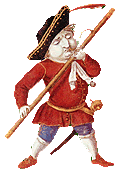 The
Chiltern Hundreds Jazz
Festival - The
Chiltern Hundreds Jazz
Festival -
Yes it is possible - given Arts Grants and Corporate support.
There are sufficient venues both in the Town Centres and the surrounding Villages
to create a Major Annual Event (even Bicester organises one) -
If you are
interested then declare here in what capacity you are prepared to assist.
Chiltern Hundreds Jazz Festival Support
|
 For
over twenty years
Michael Rabinowitz has been on the cutting edge as a
versatile bassoonist. His broad musical experience makes him as
comfortable with Bach and Mozart as he is with Charlie Parker and
John Coltrane.
For
over twenty years
Michael Rabinowitz has been on the cutting edge as a
versatile bassoonist. His broad musical experience makes him as
comfortable with Bach and Mozart as he is with Charlie Parker and
John Coltrane. Ray has enjoyed a long and fruitful career in the music industry, working with such diverse artists as:Dizzy Gillespie, Frank Zappa, Ravi Shankar, Henry Mancini, (who composed "Piece for Jazz Bassoon and Orchestra" for Ray), John Williams, Alan Silvestri, Quincy Jones, Jack Elliot, Lalo Schifrin, Sarah Vaughn, Nancy Wilson, Madonna, Stevie Wonder, Chaka Kahn, Barbra Streisand, Bill Conti, Burt Bacharach, Bobby McFerrin, Horace Silver, Joe Henderson, Lou Rawls, Willy Bobo, Michael Feinstein, Moacir Santos, Fred Myrow, Woody Herman etc.

 Bassoon,
and Contrabassoon - Woodwind Instrument
Bassoon,
and Contrabassoon - Woodwind Instrument



 Reeds
Reeds
 His
performances have included many firsts: The American West Coast
premiere of Pulitzer Prize-winning composer Gunther Schuller's
'Concerto for Contrabassoon and Orchestra'; the world premiere of
Steve Gray's 'Jazz Suite For Bassoon' with the Welsh Chamber
Orchestra; solo concerts at New York's Lincoln Centre and the Tivoli
Concert Hall in Copenhagen, and also five appearances at London's
'Pizza On The Park' with his jazz quartet. Other major venues where
he has performed include New York's Carnegie Recital Hall (two
appearances) and the Merkin Concert Hall. In London, the Wigmore
Hall (three times), St.John's Smith Square, and the BBC Concert
Hall.
His
performances have included many firsts: The American West Coast
premiere of Pulitzer Prize-winning composer Gunther Schuller's
'Concerto for Contrabassoon and Orchestra'; the world premiere of
Steve Gray's 'Jazz Suite For Bassoon' with the Welsh Chamber
Orchestra; solo concerts at New York's Lincoln Centre and the Tivoli
Concert Hall in Copenhagen, and also five appearances at London's
'Pizza On The Park' with his jazz quartet. Other major venues where
he has performed include New York's Carnegie Recital Hall (two
appearances) and the Merkin Concert Hall. In London, the Wigmore
Hall (three times), St.John's Smith Square, and the BBC Concert
Hall.  Daniel
Smith has invested a lot of time and energy to bring the repertoire
of the bassoon into ragtime, jazz and contemporary music. Smith has
recorded such titles as Bassoon Bon Bons, Bravo Bassoon
and The Swinging Bassoon, as well as performances of Gunther
Schuller's “Concerto for Contrabassoon and Orchestra” and Steve
Gray's “Jazz Suite For Bassoon and Orchestra.” As a result of his
many and diverse bassoon recordings, he has received considerable
media attention for his efforts. In 2005, composter/arranger Robert
Farnon dedicated his final composition to Smith: “Romancing the
Phoenix,” a three-movement bassoon concerto with rhythm section and
symphony orchestra in a jazz setting.
Daniel
Smith has invested a lot of time and energy to bring the repertoire
of the bassoon into ragtime, jazz and contemporary music. Smith has
recorded such titles as Bassoon Bon Bons, Bravo Bassoon
and The Swinging Bassoon, as well as performances of Gunther
Schuller's “Concerto for Contrabassoon and Orchestra” and Steve
Gray's “Jazz Suite For Bassoon and Orchestra.” As a result of his
many and diverse bassoon recordings, he has received considerable
media attention for his efforts. In 2005, composter/arranger Robert
Farnon dedicated his final composition to Smith: “Romancing the
Phoenix,” a three-movement bassoon concerto with rhythm section and
symphony orchestra in a jazz setting. 

 .
.

 Daniel
Smith's
latest recordings, BEBOP BASSOON and THE SWINGIN' BASSOON
are to be released on the Zah Zah label. Featuring a top US rhythm
section (pianist Martin Bejerano, bassist John Sullivan and drummer
Ludwig Afonso), the two CDs were recorded 'back-to-back' and up
until now have been only available from Daniel's management where
they were enthusiastically received by jazz critics worldwide.
Daniel
Smith's
latest recordings, BEBOP BASSOON and THE SWINGIN' BASSOON
are to be released on the Zah Zah label. Featuring a top US rhythm
section (pianist Martin Bejerano, bassist John Sullivan and drummer
Ludwig Afonso), the two CDs were recorded 'back-to-back' and up
until now have been only available from Daniel's management where
they were enthusiastically received by jazz critics worldwide.
